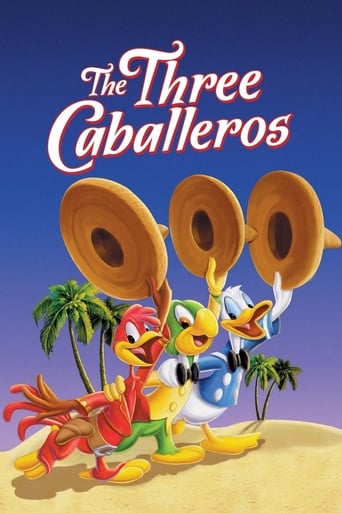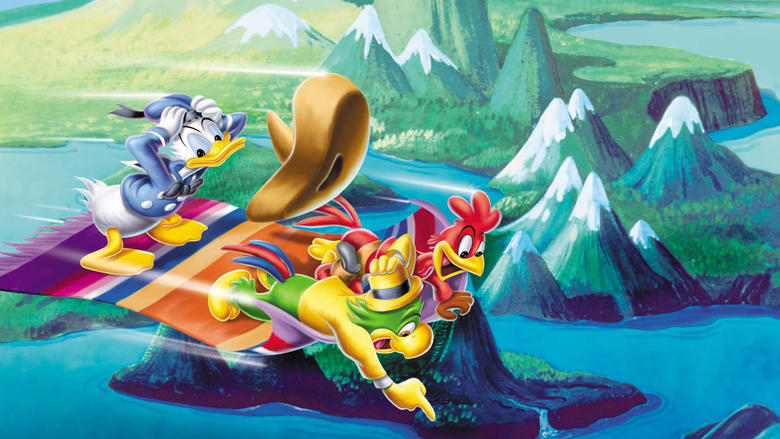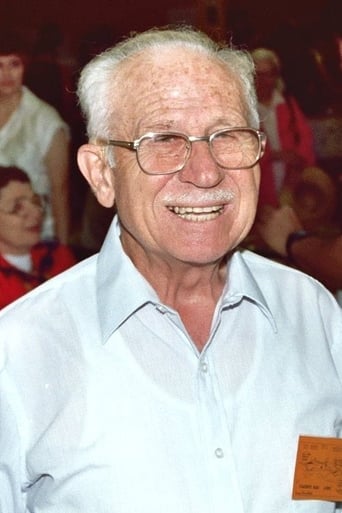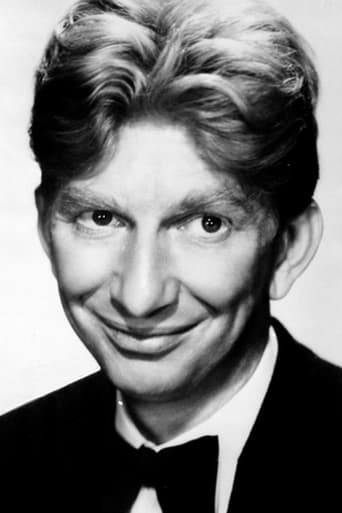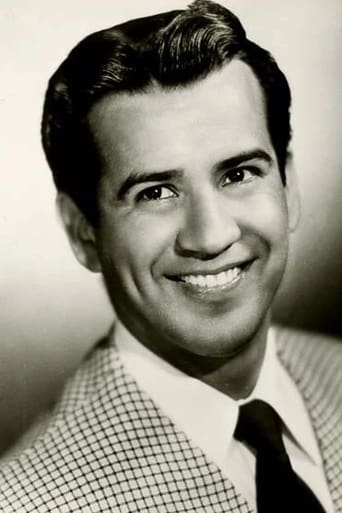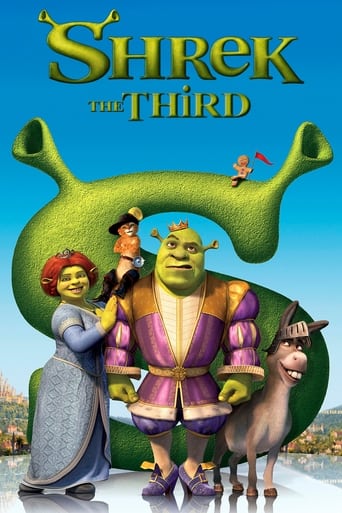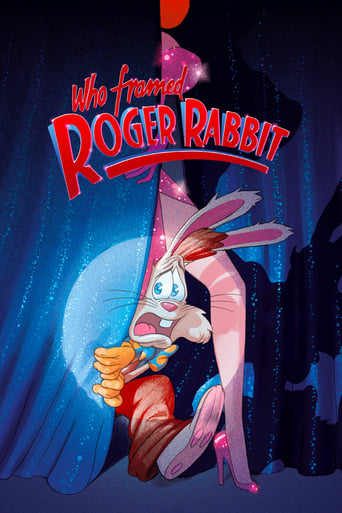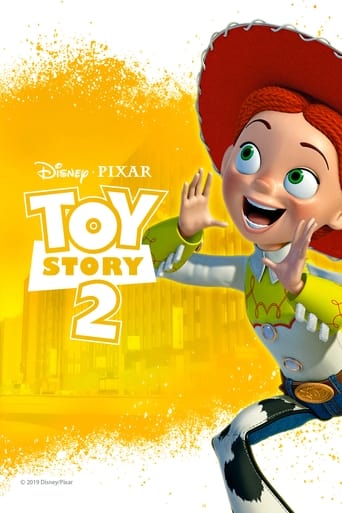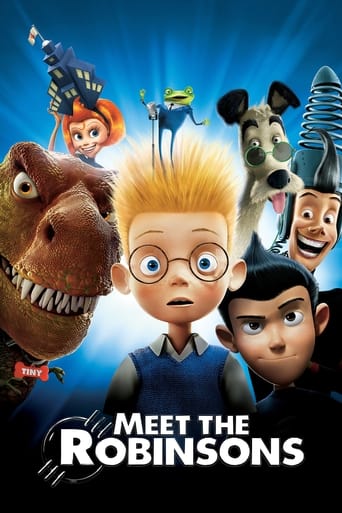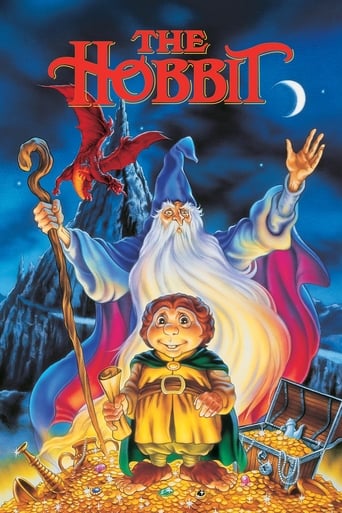The Three Caballeros (1945)
For Donald's birthday he receives a box with three gifts inside. The gifts, a movie projector, a pop-up book, and a pinata, each take Donald on wild adventures through Mexico and South America.
Watch Trailer
Cast
Similar titles
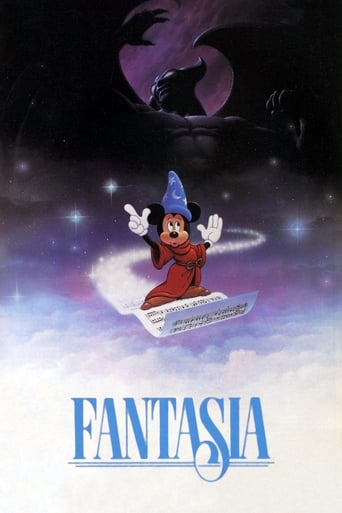


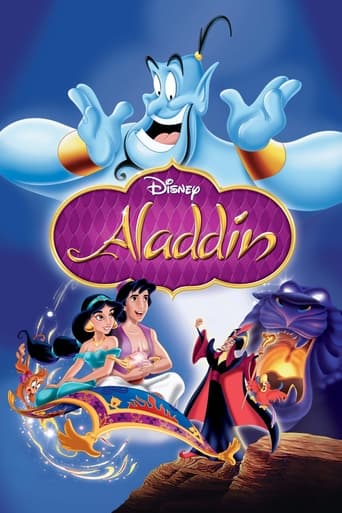
Reviews
To me, this movie is perfection.
Admirable film.
The plot isn't so bad, but the pace of storytelling is too slow which makes people bored. Certain moments are so obvious and unnecessary for the main plot. I would've fast-forwarded those moments if it was an online streaming. The ending looks like implying a sequel, not sure if this movie will get one
The film's masterful storytelling did its job. The message was clear. No need to overdo.
I'm surprised that the Hays Office Code let Walt Disney get away with inappropriateness in cartoons before 1968, which Disney died two years before that code was eliminated. Imagine! Inter-specie intimacy! In a Disney cartoon! It would have been better off given a PG rating back when it was reissued in 1977 because of the suggestive inter-specie themes. At least this is nowhere as disgusting as the atrocious "Foodfight!" (don't get me started on that).
"Saludos Amigos" (1942) and "The Three Caballeros" (1944) are really dreadful Walt Disney productions, which were made during World War II supposedly to improve relations between the United States and Latin American countries. Luckily in "The Three Caballeros" the action only takes place in Mexico and Brazil. Of course, there are some attractive things, such as the proto-psychedelic animation of Mary Blair that would flourish in "Alice in Wonderland" (Disney's most "stoned" feature, if you ask me), but almost by rule all is offensive: stereotypes, ridiculous characters or cultural mockery. All the plot offers is Donald Duck opening presents on his birthday, from two Latin American friends: Brazilian José Carioca (from "Saludos Amigos") and Mexican Panchito (Villa, I suppose). Each time a box is open you watch an animated sequence of native songs (including a horrendous English version of maestro Manuel Esperón's "Ay Jalisco no te rajes"). Donald Duck (who looks a lot like Donald Trump in his arrogant behavior) even harasses several Latin women, anticipating the days of his namesake. The only thing that seemed fantastic to me (and it's personal taste, of course) was Carmen Miranda's sister, the sinuous Aurora Miranda who sings and dances in a beautiful and colorful musical sequence composed by Ary Barroso. If Disney has kept "Song of the South" out of circulation because of "offensive treatment of African-American" this film could deserve the same medicine. However, the only thing Disney executives seem to find objectionable is that the characters smoke, so in the DVD edition cigars and cigarettes were deleted, except the one in José Carioca's peak... As "Saludos Amigos", it is a schematic, silly and ugly Disney you can ignore.
The Three Caballeros shows Disney at a rather innovative point combining psychedelic imagery with a catchy South American beat. Years before Yellow Submarine, The Three Caballeros brought psychedelic and surreal animation to the stage. Despite a few rocky segments at the beginning, The Three Caballeros ends with energy and visual beauty.The plot is simple, Donald is opening birthday presents (His birthday is humorously on Friday the 13th.) and meeting his old friend Jose Carioca (the Brazilian parrot) and a new friend Panchito Pistoles (the gun-slinging Mexican rooster). The lack of a strong plot and those opening segments (well, the penguin segment was alright, but really The Flying Burrito?)are more than made up in later segments, which takes the form of a travelogue through Bahia in Brazil and Mexico. First stop is Bahia with Jose where live action and animation combine o form a big pop sequence full of bright colors and rollicking samba music. Carmen Miranda's sister Aurora appears in live action singing Os Quidenes de Yaya (The Cookies of Yaya) followed by a surrealist trip through a dance hall full of brightly colored circles, musical instruments playing themselves, and roosters turning into dancers.The second part is a our tour through Mexico on the magical serape. Here Donald chases girls on the beach, dances in traditional Mexican dances and falls in love with a girl singing You Belong to My Heart in Mexico City's nightlife. Thsi leads to one of the most surreal sequences in animation history, full of bouncing flowers, girls running around in neon colors, and a horse with women's legs. This ends in a big sequence with dancing cacti. All finally ends in a fireworks display full of color, and The Three Cablleros have reprise of their signature song.Overall, style 10/10, visuals 10/10, music 10/10, plot 7/10, screenplay 8/10.
I find it hard to believe that this was a World War II propaganda film. It doesn't really seem to fit that mold. Propaganda of the time was pretty heavy-handed, and most of it isn't all that entertaining today except as an artifact of the period. This movie is a joy to watch in its own right, and if there's an anti-fascist message embedded within, it's awfully subtle. My understanding was that this was Disney's attempt to open up Central and South America as a market for their films, since the war had pretty much eliminated the European market. Whatever its pedigree, though, this is one of the few Disney videos that I don't mind watching endlessly with the kids, especially the parts that involve the titular Caballeros. The movie is somewhat disjointed and episodic, but what holds it all together is good music. My least favorite episode is the story of the flying donkey, which gets old quickly, particularly since (and this is my one complaint) they chose to have a North American announcer attempt a Mexican accent. Why they could not have simply found an actual Mexican actor is beyond me - Los Angeles being in Mexico's backyard, after all. But Disney seemed to enjoy mixing and matching nationalities even into the 1960s, hiring, for example, US actors to play English characters in Mary Poppins, Treasure Island, and 101 Dalmatians; or Hayley Mills, who was a British actress who always seemed to be playing an American. In fact, the latter is something seen commonly nowadays, when it seems half the working actors in Hollywood are British subjects putting on American dialects (Hugh Laurie, Damian Lewis, Christian Bale).
